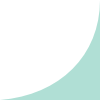Blog
Let’s not think ahead too much. That could basically describe how I have behaved in my career so far. But while this truly can be a great mantra for career planning, it doesn’t hold anymore for the issues we face on climate change and sustainability.

Florijn Dekkers
Senior researcher in Anne Rios' lab, Princess Máxima Center



Collaborative research leads to higher quality
While finishing my studies, I thoroughly enjoyed my time as an intern in the lab of Jeffrey Beekman at the UMC Utrecht. When I got the opportunity to start a PhD project there, gut and brain quickly agreed: it felt good and it was a logic and challenging thing to do. What would happen after that step? No clue yet, but I was sure I would figure it out. The final stages of my PhD project forced me to do “the figuring out”. I have been at a few of those crossroads in my career where a phase ends and the status quo would change. When reflecting a bit, I now realize that the end of a phase takes me out of my comfort zone and creates new perspectives. Where do I go next? What is the next dot on the horizon? After my PhD, that dot was in Australia. At the Walter and Eliza Hall Institute of Medical Research in Melbourne I switched gears to oncology. I was able to apply the organoid technology I mastered in Utrecht to study breast cancer and started working together with Anne Rios. And without a big masterplan, those two elements have now become the common thread in my career.
"Being surrounded by international scientists, my ambition to pursue a career in research grew stronger."
After that great period in Australia, I moved back to Utrecht, worked in the lab of Hans Clevers for a year before joining the lab of Anne at the Princess Máxima Center. Our complementary skills have now led to a fascinating new line of research: investigating the behavior of immune cells. By combining tumor organoids with 3D live cell imaging, we could dive into a completely new concept. When applying immune therapy to these tumors in a dish, we see that immune cells behave heterogeneously. Some are lazy, some are hyperactive. In essence, these cells are just like people: very much alike, but all a bit different. We’re now looking into whether we can change the behavior of those cells. Can we make the lazy one more active? I do hope that changing the behavior of immune cells is easier than changing the behavior of people.
Along my career steps I have also become a mom of two. Bringing a new life into the world made me change my behavior in many ways. All of a sudden, I had to combine my life as a researcher with my life as a mom. A challenging time and another one of those crossroads, but it truly helps to have a role model. During my PhD project I got to know Linde Meyaard, a fellow Oncode Investigator, and she is proof that being a mom and being a great scientist can happen at the same time. But I noticed something else with myself. What will the world for my kids look like if we continue our behavior the way we are used to? Can we still turn around the effects of climate change? I was already quite aware of these challenges but bringing kids into the world gave this a new dimension.
In my personal life I started to do more and more to reduce my impact. This created a growing mismatch with my life in the lab. Energy consumption, plastic waste, water consumption: our important lab work has quite a footprint and big steps can be made to reduce it. This is where my career took another unplanned turn: I co-founded Green Labs NL. I can now use the project management, writing and presentation skills I picked along in my career for a whole different purpose: starting a movement to make our lab life greener. Through education, a certification systems and raising awareness we have a clear goal: sustainable science in the Netherlands. Curious how you can make a difference? Have a look and change your own behavior.
Photography by Marloes Verweij, Laloes Fotografie
